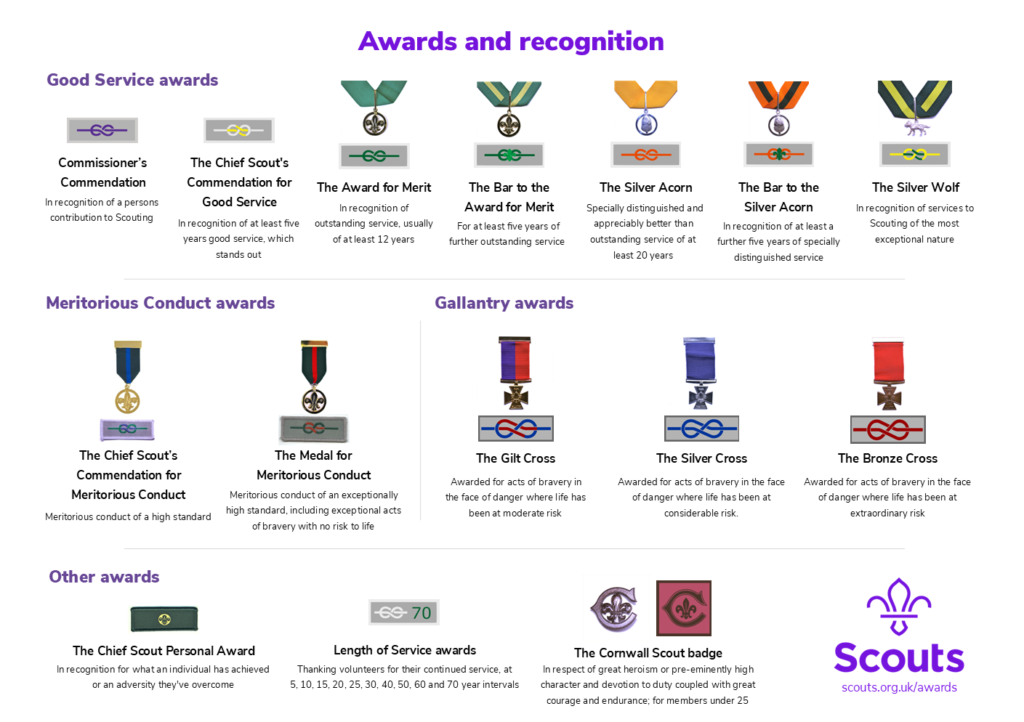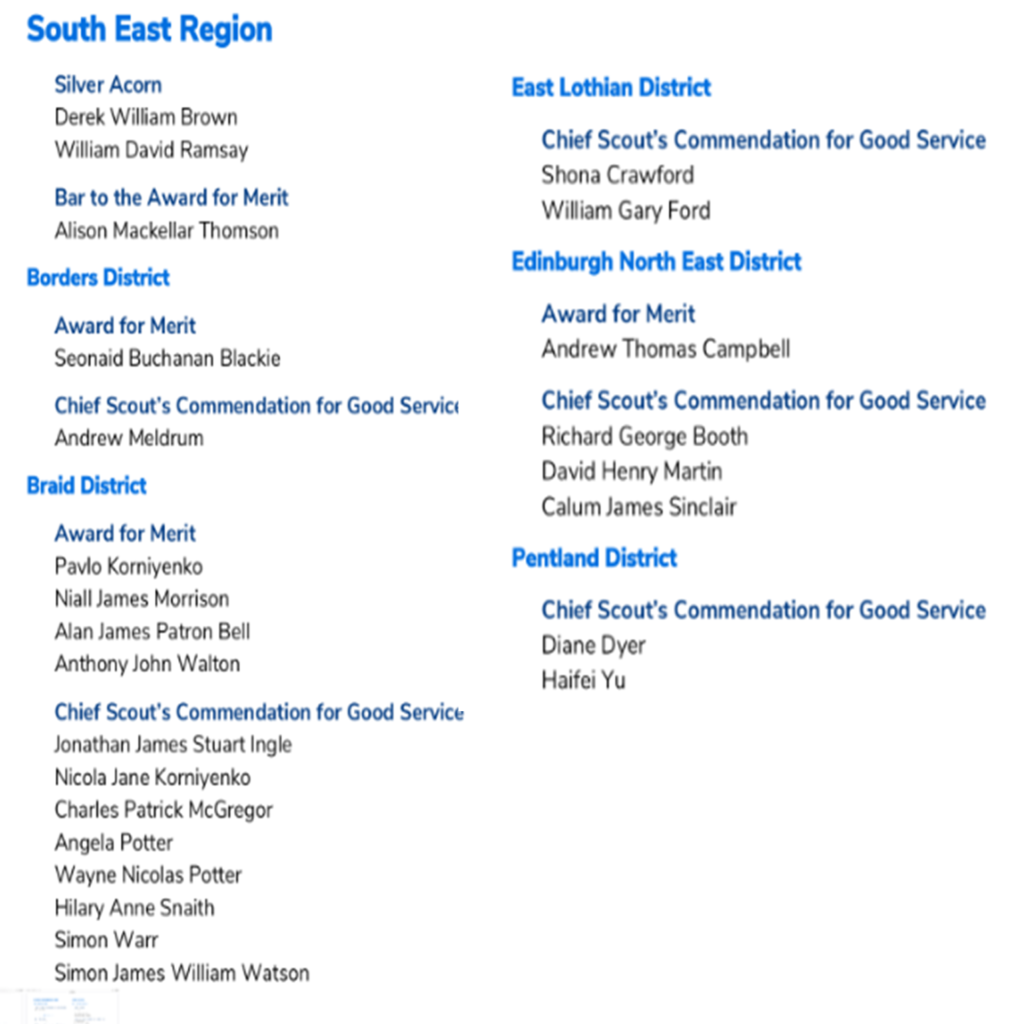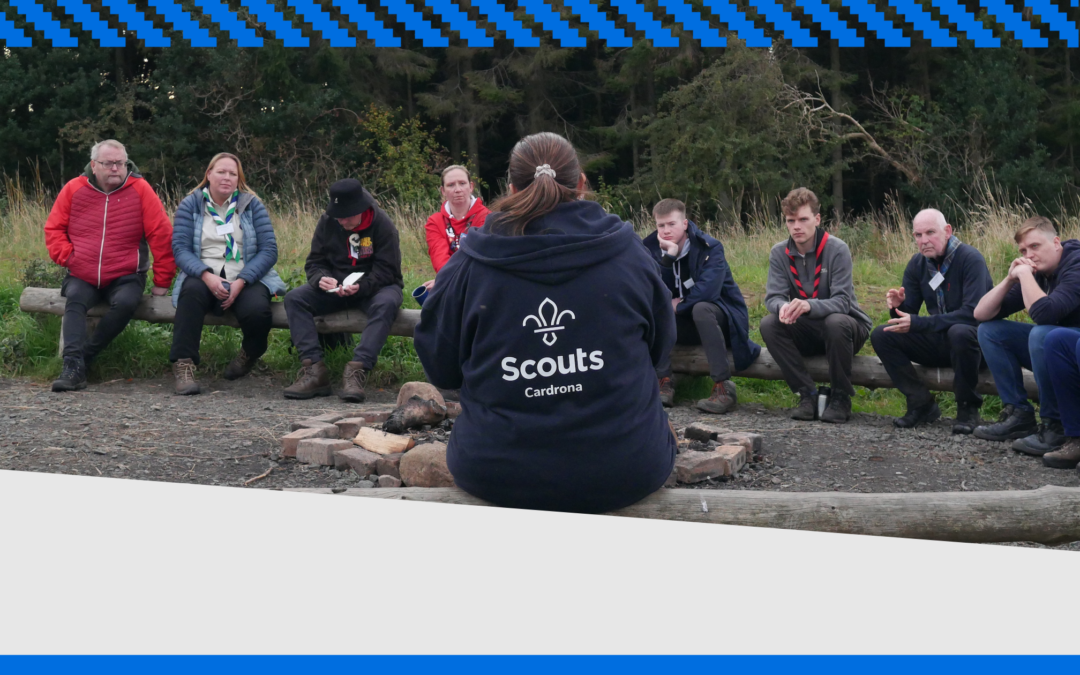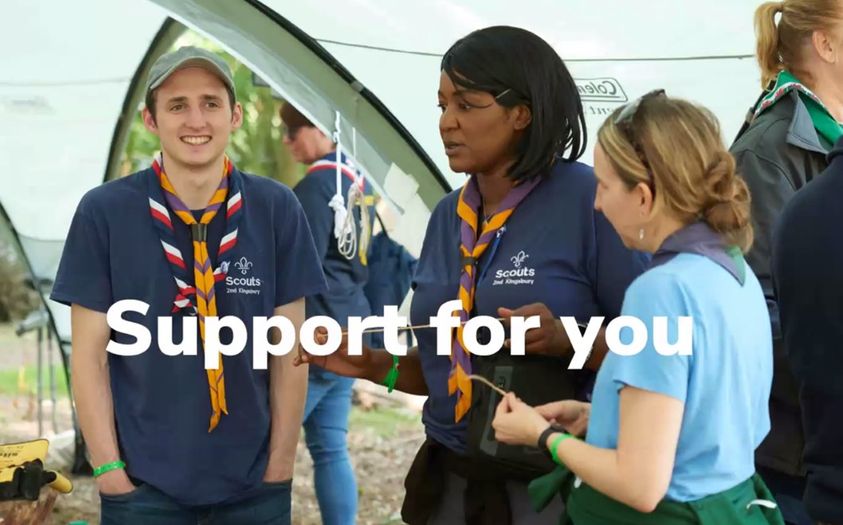
Recognising Our Fellow Volunteers
6 Feb 2025

John Bruce
Awards Team Leader

Saying thank you and well done is one of the simplest, but most powerful ways to recognise our fellow volunteers. It really does count for so much. That’s why our award scheme is so important.
Recognising people’s contribution in a meaningful way will leave them feeling valued and motivated. The new membership system makes it easier to nominate someone who deserves to be thanked for their good service. I would encourage you to put people forward for an award and make them feel even more special – beyond a simple word of thanks.
We know you’re busy with Scouts and your other commitments, which is why the nomination process has been made as simple as possible. You should find everything you need below: More Information about the Awards Scheme can be found here and your guide to making a nomination can be found at the Awards page

Congratulations to our John Kennedy
South East Scotland Scouts are delighted that John Kennedy, who was the Edinburgh Area Commissioner when the Region was formed in 2008, has been awarded an OBE in the New Year’s Honours List.
John has held a wide variety of roles at local, District and National level, where he is currently the Treasurer for Scouts Scotland.
Over 46 years supporting Scouting, John’s dedication, enthusiasm and leadership have allowed many young people to gain #SkillsForLife and this honour is very well deserved.

Congratulations John from all your friends in South East Scotland Scouts.
In addition, congratulations to those members of South East Scotland who have recently received awards for the work they do in supporting Scouting in our Region.






















